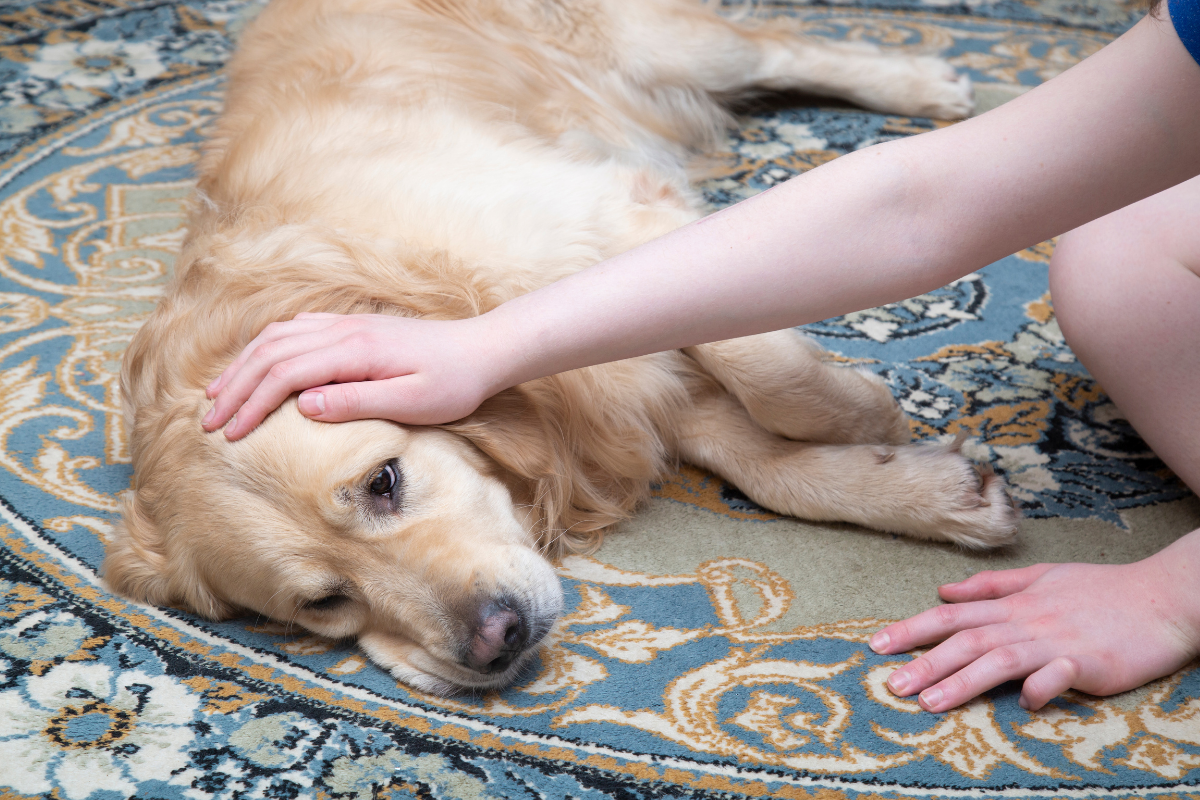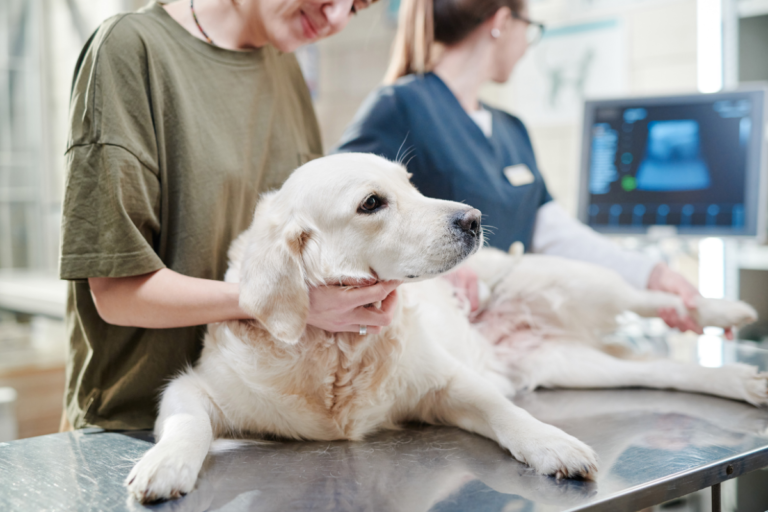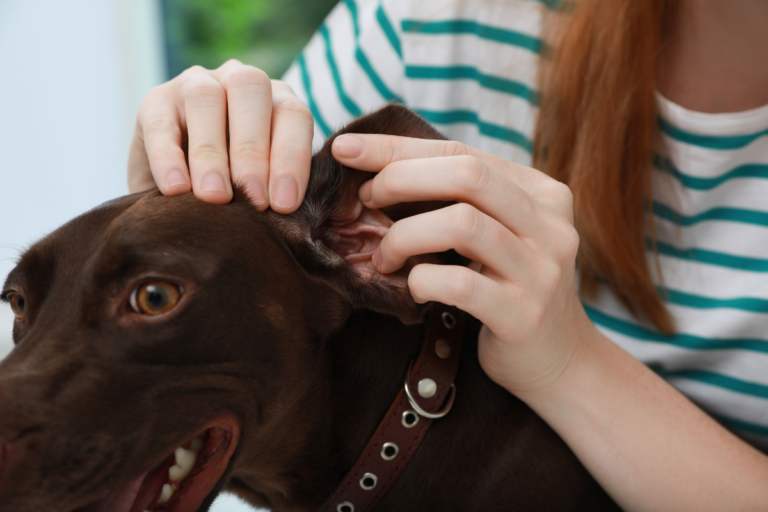Armoring Our Best Friends: Dog Diseases and Symptoms Decoded
Understanding Dog Diseases
Our beloved pooches can sometimes land themselves in the vet’s office with a variety of health issues. Knowing what’s what with common dog diseases and spotting early symptoms keeps us one step ahead in making sure our four-legged friends are happy and healthy.
Types of Dog Diseases
Doggie diseases come in three flavors:
- Germy Illnesses: These are the crud spread by bacteria, viruses, fungi, or parasites. You’ve probably heard of some: canine distemper, parvovirus, and kennel cough come to mind.
- Internal Freak-Outs: Things like genetic quirks, cancer, or when the immune system gets a little too excited and goes on the attack. Hip dysplasia and cancers too fit snugly in this bunch.
- Boo-boos of Bones and Muscle: These trouble the bones, joints, and muscles, causing issues like arthritis and more hip dysplasia.
Getting a handle on these categories helps us stay alert to the various hiccups that might cause our furry pals some grief.
Dive into Infectious Diseases
When germs are on the move, it leads to infectious diseases. These bad boys can hop from doggy to doggy, or sneak in from the environment. Here are some of the usual suspects:
-
Canine Distemper: Here’s a nasty illness with a grab-bag of symptoms—fever, less pep, appetite gone, nasty nose, and some diarrhea to boot. If things get worse, it might even affect the nervous system. Vaccines save the day here and are a must if you want to keep your fur buddy out of the vet’s office.
-
Canine Parvovirus: A puppy-and-unvaccinated-dog menace, this virus causes explosive and bloody diarrhea, vomiting, and a lethargy that glues your dog to the floor. Vaccinations can save you some serious heartbreak.
-
Kennel Cough: Think of it as the dog version of a bad cold, but the cough’s got a bark. This one’s big in crowded spaces the likes of kennels.
Head over to our dog diseases section to get the low-down on other illnesses that might bug your pup.
Bone and Muscle Sit-uations
When bones and muscles become problematic, things can get achy for our doggy friends. Here’s what to watch out for:
-
Arthritis: Anywhere there’s a joint, this could flare up, but expect it in shoulders, hips, elbows, and knees most. It could be age, an old injury, the family tree, or even a random disease leading to achy, stiff joints. Keep an eye on signs like trouble moving or avoiding stairs as they can be red flags.
-
Hip Dysplasia: If you’ve got a big-boned dog, you might need to keep an eye out for this hip issue that wasn’t put together quite right. Watch for limps, reluctance to play as much, or difficulty getting up.
-
Muscular Dystrophy: A troublemaker in the muscles, it’s genetic and can cause muscles to weaken and shrink over time.
Knowing what to look for means we can rush our pupper to the vet when necessary and boost their quality of life. Routine check-ups and being mindful of symptoms mean you can catch issues early and keep tails wagging. For even more nitty-gritty, check out our article on dog heart disease and other canine health topics.
Common Canine Health Issues
Knowing what health hiccups can trip up our four-legged pals is a big piece of keeping them in tail-wagging shape. We’re digging into three heavy-hitters: Canine Distemper, Canine Parvovirus, and Arthritis in Dogs.
Canine Distemper
Canine Distemper is like the nasty bully of virus land, throwing punches at a dog’s breathing, munching, and brain functions. It likes picking on little ones and those without their vaccine shields up (WebMD).
Symptoms of Canine Distemper
This menace shows up with a fever, drippy noses, and hacking coughs. If things get worse, it might mess with the brain, causing twitchies and trouble standing up straight (Merck Veterinary Manual).
| Sick Symptoms | Brainy Problems |
|---|---|
| Fever | Twitchies (Seizures) |
| Hacking cough | Wobbles (Paralysis) |
| Snotty nose | Dizzy dance (Ataxia) |
For all the deets and tips to tackle, pop over to our seizures in dogs symptoms page.
Canine Parvovirus
Canine Parvovirus doesn’t play nice—it spreads like wildfire, hitting pups and non-vaxed dogs hard (PetMD). It zeroes in on the gut, causing serious upset.
Symptoms of Canine Parvovirus
Watch for puking, runny or bloody poop, not wanting to nibble, and overall pooch laziness (PetMD).
| Messy Signs |
|---|
| Puking |
| Messy or bloody poop |
| No appetite |
| Pooch slowdown |
Jump on this fast with vet help. Get schooled on preventive care to keep this terror at bay.
Arthritis in Dogs
Arthritis loves a good old joint, turning them sore and stiffy. Older dogs and certain breeds often have it rough.
Signs and Symptoms of Arthritis
Spot the hobbling, the struggle to rise, and the ‘nah, I’d rather not’ when it’s time to move. Grumpy vibes and weird sleep habits might tag along (ToeGrips).
| Limping Signs | Moody Moves |
|---|---|
| Hobble walk | Mr. Grumpypants |
| Standing struggle | Sleep flip-flop |
| Motion jitters | Less excited wagging |
Tackling arthritis means mixing meds, some vet-approved stretchies, and lifestyle tweaks. Get the scoop on managing arthritis in dogs.
By keeping our eyes peeled and ears perked, we ensure our furry friends live full, joyful lives. Sniff out more on bloat symptoms dog and dog gum disease to keep your pooch in tip-top shape.
Canine Distemper in Detail
Causes and Transmission
Canine distemper is a nasty bug, buzzing around like bees at a picnic, spreading chaos among our tail-wagging pals. Dogs catch this mischief-maker through sniffing up the wrong sneeze or swapping slobber at the water dish. Even a lick from an infected buddy can bring trouble, especially for the young pups and the old-timers who missed their shots.
| Transmission Source | Details |
|---|---|
| Urine, Blood, Saliva | No avoiding trouble if they mingle with infected fluids |
| Respiratory Droplets | Inhale a sneeze, and it’s a deal done |
| Contaminated Bowls | Sharing is caring, except with germs |
Symptoms and Progression
When this virus crashes the party, it likes to sneak in slowly, taking around two weeks to set up shop. It hits all the buttons, from your dog’s tummy, lungs, coat, and even their brainy bits. Recognizing the signs early gives us a leg up on handling this dicey visitor. It doesn’t just knock, it huffs and puffs through various stages, showing off an unpleasant mix of symptoms.
| System Affected | Symptoms |
|---|---|
| Systemic | Fever, feeling down, not hungry for their usual treats |
| Respiratory | Sniffles, and possibly pneumonia |
| Gastrointestinal | Tummy problems, like diarrhea |
| Neurologic | Twitching, little or big seizures |
Things go downhill fast if we don’t catch this lurker early. Seizures can roll in after the viral party starts. Spotting these signals means we can jump in and help our four-legged friend.
Treatment and Recovery
When our fur babies show signs of being under distemper’s spell, it’s all hands on deck with treatment. The aim is to manage symptoms and stop any unwelcome bacterial hitchhikers. Here’s the plan:
- Antibiotics: Guards our dogs against hive-minded bacteria.
- Anticonvulsants: Keeping their nerves calm.
- Fluid Therapy: Refreshes and hydrates our pals.
| Treatment | Purpose |
|---|---|
| Antibiotics | Avoid those pesky follow-up infections |
| Anticonvulsants | Control and calm seizures |
| Fluid Therapy | Prevent dehydration, promote health |
Constant care from the vet is a must during this recovery chapter. Acting fast with supportive treatments boosts their bounce-back chances (WebMD).
For more insights and advice on handling dog diseases, wander through our blog. Stay ahead of the game by keeping your fur buddy vaccinated and health-checked; it’s the least they deserve for being our best pal.
Canine Parvovirus Explained
Let’s jump right into the essentials about Canine Parvovirus (CPV), a sneaky little menace that can wreak havoc on our furry friends. It’s intensely contagious and potentially lethal, so getting a grip on the symptoms, how to treat it, and ways to prevent it, keeps us ahead in the game of dog care.
Symptoms and Diagnosis
Parvovirus shows up in our pooch pals within a week of them catching it, often leading to a race against time. Be on the lookout for:
- Fido lazing around more than usual
- Skipping meals
- Feverish behavior
- Tummy troubles
- Unexpected upchucking
- Wild bathroom escapades
- Looking weak as a noodle
- Heart racing like they’ve just chased a car
- Breathlessness
- A nosedive in white blood cells
- Shivering like it’s winter
- Dropping blood sugar levels
The severity can flip-flop based on Fluffy’s age and whether they’re in peek or squeak health.
Treatment Options
When the vet gives the parvo nod, it’s time to jump into overdrive. Treatment costs might hit the wallet hard, somewhere between $1,000 and $2,100, depending on how lengthy and severe the case is. Here’s the scoop on treatment:
- IV Fluids: To battle the body’s water loss from vomiting and the runs.
- Antibiotics: To keep those pesky bacteria from crashing the party.
- Anti-Barf Meds: To help settle their stomachs and tackle nutrition better.
- Simple Eats: An easy-on-the-tummy diet to ease them back to tip-top shape (PetMD).
Expect a hospital stay of about a week, and then some R&R for at least another ten days, more if the little one’s still feeling rough. Home TLC might also be in the cards for serious cases.
Prevention and Vaccination
Beating parvo is easier and kinder to the pocket compared to the headache of treating it. Vaccination punches the virus way out of the park. Here’s the 411 on keeping Spot safe:
| Prevention Method | Details | Cost |
|---|---|---|
| Vaccination | A must for every pup. Starts with a series of jabs at about six weeks old. | $30–50 per shot |
| Isolation | Seclude sick buddies to stop the bug from hopping around. The virus can lurk on surfaces for ages. | Varies |
| Clean-Up | Scrubbing down kennels, toys, and doggy dishes regularly. Keep clean when dealing with sick pooches. | Low |
Get those vaccinations rolling for the tiny ones starting at six weeks and sticking to the vet’s schedule (PetMD).
For more on keeping your four-legged buddy disease-free, check our dog diseases guide. And let’s not forget, sticking to the vaccination plan and maintaining cleanliness is the ticket to a lively and joyous pup.
Managing Arthritis in Dogs
Signs and Symptoms
Arthritis is that pesky intruder that can mess with any of your dog’s joints, but it particularly loves hanging out in the shoulders, hips, elbows, and knees. Sneaky causes include wear and tear, old boo-boos, family tree quirks, or just plain bad luck with diseases. As dog owners, we need to keep an eye out for arthritis symptoms so we can lend a helping hand to our four-legged pals.
Here’s a quick cheat sheet for spotting arthritis in dogs:
- Playing Hard to Get: Your dog hesitates to stand up, lie down, or join in for a good play.
- Staircase Struggles: Climbing up or down stairs becomes an epic struggle.
- Playground Pity Party: Notice a yawn fest where there used to be running, playing, or enthusiastic walks.
- Leaning Tower of Pooch: Your dog prefers one leg over others; not exactly a smooth dance move.
- Sore and Stiff as a Board: Aches or stiffness that may ease up after stretching those paws.
- Not-So-Friendly Touch: Your dog squeals or flinches when those joints get a pat.
- Muscle M.I.A.: Their hips and back legs seem to be shrinking due to moving less.
Diagnosis and Treatment
When it comes to figuring out dog arthritis, there’s a little detective work involved. A vet will look at medical history, get all hands-on in a physical exam, and maybe order some fancy gadgets like X-rays or MRIs.
| Diagnostic Trick | What It Finds |
|---|---|
| Physical Exam | Spots sore spots, pain, puffiness, or weird joint moves |
| X-rays | Snaps clear bone-and-joint photos |
| MRI | Gives us the full picture in tricky cases |
The goal for treatment? Make sure your doggo’s chillin’ free of pain, with joints moving smooth and easy. Options range from:
- Meds: Those trusty NSAIDs or painkillers.
- Supps: Glucosamine and chondroitin to keep the joints groovy.
- PT: Special exercises and even splashing around in water to beef up muscles.
- Weight Watch: Keeping them at a healthy weight is like taking stress off their joints. Everyone loves dessert, just maybe not every day!
For more about tackling doggie diseases, peep our article on dog illnesses.
Lifestyle Changes for Arthritic Dogs
Want to level up your dog’s comfort game? Here’s what can help:
- Fluffy Beds: Supportive bedding can work wonders for tired joints.
- Easy Does It: Gentle activities, like short walks or a dip in the pool, keep muscles from wimping out.
- Warm and Toasty: Keeping your home cozy because cold and dog arthritis are frenemies.
- Edible Edits: A balanced diet with some anti-inflammatory flair.
- Helper Gear: Ramps, sports stairs, or slings to ease their moves.
Tweakin’ these things can seriously boost the comfort-meter for our sore pups. Check out more expert advice on canine well-being and flip through our pages on dog diabetes symptoms and canine dental.
By spotting arthritis signs early, getting a legit diagnosis, and makin’ savvy lifestyle changes, we make sure our pups feel as comfy as possible. For more dogged details, give our dog diseases page a whirl and keep your best buddy feelin’ spry!
Heartworm Disease in Dogs
Heartworm disease isn’t just another tick-bite. It’s a serious problem that can mess up our furry pals’ lives. So, getting to grips with this pesky issue can keep our tails wagging and spirits high.
Overview of Heartworm Disease
Imagine this tiny villain called Dirofilaria immitis—a worm that cozies up in a dog’s heart and lungs. It’s like a bad roomie that won’t leave, staying for five to seven years and even growing a foot long! And trust the mosquitoes to be the sneaky delivery guys. One bite, and bam! We’ve got trouble heading straight to the heart.
Left unchecked, this unwelcome guest can cause heart failure or worse, which is why this disease isn’t something to pooh-pooh.
Symptoms and Testing
Heartworm symptoms don’t always show up right away, especially if there aren’t many worms. But when they go H.A.M. or the dog’s quite active, the signs can’t hide anymore.
Watch out for these red flags:
- Persistent cough
- Tiredness after a jog or play
- Loss of appetite
- Dropping pounds without trying
In tough situations:
- Bloated belly ’cause of fluid
- Struggling with breathing
- Passing out
Every year, our dogs need a date with the vet for a simple blood test. It’s the best way to catch the worms even if our dogs are on preventatives (FDA).
| Symptom | What it Means | How Serious? |
|---|---|---|
| Persistent Cough | Keeps coughing, no chill. | Moderate |
| Fatigue | Pants hard after little exercise. | High |
| Loss of Appetite | Not interested in treats. | High |
| Weight Loss | Slimming down, unplanned. | High |
| Swollen Belly | Belly’s big from fluid. | Severe |
| Labored Breathing | Air’s a struggle. | Severe |
| Fainting | Playing dead ain’t a trick here. | Severe |
Treatment and Prevention
Tackling heartworm is a bit of a mission. First line of attack? Use meds to defeat the adult worms, then sweep up the young ones. It’s pricey and needs careful watching, so things don’t get dicey.
| Treatment | What It Does | Important Note |
|---|---|---|
| Melarsomine Injections | Zaps the adult worms. | Needs up to three jabs. |
| Doxycycline | Takes out worms’ bacterial buddies. | Often first step. |
| Prevention Medications | Stops young worms from growing up. | Use year-round, pretty please! |
Prevention is the game-winner here! Loads of options like monthly meals, stuff you slap on, or even a shot in the arm. All important since heartworms love playing near the Atlantic, Gulf, and Mississippi River areas (FDA). Keep the protection going with our insights on dogs and ticks.
With a little know-how and the right actions, we’ll keep our dogs safe from heartworm woes. Need more on canine heart care? Peek at our article on dog heart disease.






